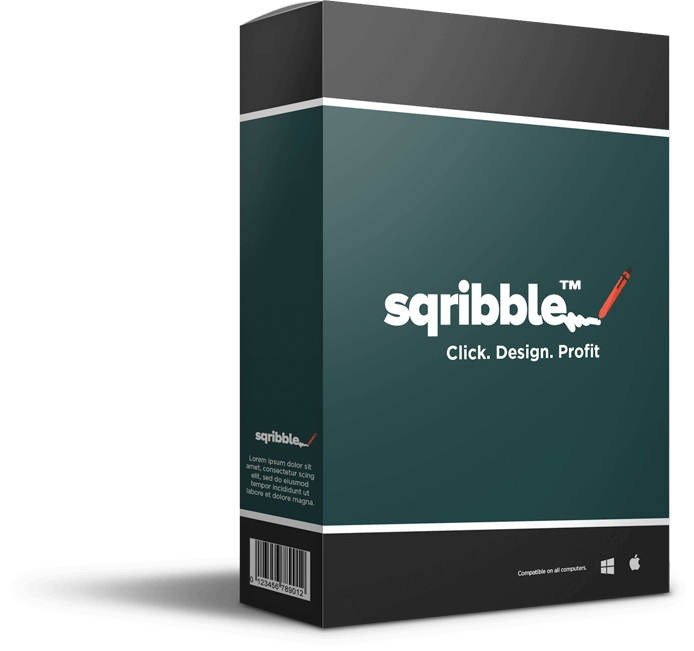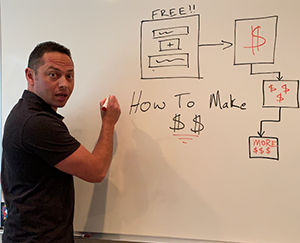Raise Profits with People Magic: Transform Your Business with Engaging Communities written by John Jantsch read more at Duct Tape Marketing
The Duct Tape Marketing Podcast with John Jantsch In this episode of the Duct Tape Marketing Podcast, I interviewed Gina Bianchini, the CEO and founder of Mighty Networks, a community platform that leverages advanced technology and AI to connect people within community courses, events, and paid memberships. She shares her insights on how businesses […]
Raise Profits with People Magic: Transform Your Business with Engaging Communities written by John Jantsch read more at Duct Tape Marketing
The Duct Tape Marketing Podcast with John Jantsch
In this episode of the Duct Tape Marketing Podcast, I interviewed Gina Bianchini, the CEO and founder of Mighty Networks, a community platform that leverages advanced technology and AI to connect people within community courses, events, and paid memberships. She shares her insights on how businesses can transform their approach by fostering engaging online communities, ultimately raising profits and enhancing member experiences.
Key Takeaways
Questions I ask Gina Bianchini:
[02:25] Would you say Ning was ahead of its time?
[03:50] Would you say a platform like Facebook then was another advancement of Ning or completely derivative?
[07:53] How would you define community?
[14:03] How important is having a clear and compelling purpose in designing your community?
[17:13] How do you manage having so many feature requests?
[21:18] Do you have an interesting case study of how someone achieved great financial success starting with a community?
[24:44] Is there someplace you want to invite people to learn more about Mighty and connect with you?
More About Gina Bianchini:
Like this show? Click on over and give us a review on iTunes, please!
Connect with John Jantsch on LinkedIn
This episode of The Duct Tape Marketing Podcast is brought to you by ActiveCampaign
Try ActiveCampaign free for 14 days with our special offer. Exclusive to new customers—upgrade and grow your business with ActiveCampaign today!
Speaker 1 (00:00): I was like, I found it. I found it. This is what I’ve been looking for. I can honestly say it has genuinely changed the way I run my business. It’s changed the results that I’m seeing. It’s changed my engagement with clients. It’s changed my engagement with the team. I couldn’t be happier. Honestly. It’s the best investment I ever made. What
John Jantsch (00:17): You just heard was a testimonial from a recent graduate of the Duct Tape Marketing certification intensive program for fractional CMOs marketing agencies and consultants just like them. You could choose our system to move from vendor to trusted advisor, attract only ideal clients, and confidently present your strategies to build monthly recurring revenue. Visit DTM world slash scale to book your free advisory call and learn more. It’s time to transform your approach. Book your call today, DTM World slash scale.
(01:03): Hello and welcome to another episode of the Duct Tape Marketing Podcast. This is John Jantsch. My guest today is Gina Bianchini. She’s the CEO and founder of Mighty Networks, a community platform that powers people magic. I want to hear about people magic. It’s an advanced technology and AI that connects the most relevant and interesting people to each other in the context of community courses, events and paid membership. She’s also the author of the Wall Street Journal, bestseller, purpose, design a Community and Change Your Life, A Step-by-Step Guide to Finding Your Purpose and Making It Matter. So Gina, welcome to the show.
Gina Bianchini (01:40): Thank you for having me.
John Jantsch (01:42): So I read in your bio, I didn’t read it on air here, but in doing a little research that you grew up in Cupertino, I didn’t know anybody actually grew up in Cupertino.
Gina Bianchini (01:51): They have many people have grown up in Cupertino, California, which now is very actually starting in the early eighties. It was really well known for Apple.
John Jantsch (02:03): Well, that’s what I mean. That’s what I was going to say. That’s what I thought it was. I thought it was Apple.
Gina Bianchini (02:06): Yeah. No, my grandparents moved there in the fifties. Oh,
John Jantsch (02:10): Wow. I have to tell you, I had a, again, I didn’t put in your bio. I had a Ning community in about 2006.
Gina Bianchini (02:18): Oh, thank you for that
John Jantsch (02:19): Seven. And at that time it was probably the coolest thing ever. Right. What happened to Ning? Were you sort of ahead of its time?
Gina Bianchini (02:29): I think it was a little bit ahead of its time for sure. The other thing is we just didn’t know what the right business model was, so we thought it was an advertising based business. And what’s interesting is if as any entrepreneur want to do, when you look back with sort of the 2020 hindsight, it was the same point in time where Shopify and other platforms that were SaaS-based coming up and we were a SaaS company and we just didn’t know it.
John Jantsch (02:59): Yeah, yeah. I think there were a lot of people that saw it as really, it’s kind of the same thing, didn’t really know what to do with it to get the most out of it. And I don’t think actually online community was quite a thing yet. People were still,
Gina Bianchini (03:15): Oh, I don’t know about that. When you think about forums as really sort of the 1.0 equivalent, what Ning was really the Web 2.0 equivalent of that same desire and that same behavior, and I would say my career has just been what is 3, 4, 5 in the future of that same fundamental goal of how do we use the internet? How do we use connected technologies to bring people together around the things that are most important to ’em?
John Jantsch (03:50): Would you say a platform like Facebook then was another advancement of that or really completely derivative?
Gina Bianchini (03:57): Well, so here’s the thing. I think what Facebook started as and what Facebook is today are two very different things. I would say Facebook groups were really built for college students who already knew each other and remain something that is really designed for people who already know each other. Otherwise, there would be more and more investment in Facebook groups and specifically how do you create value for people who are just meeting for the first time. And that is not something that Facebook has prioritized. A lot of great stuff happening at Meta overall, that’s just not an area that is important to them.
John Jantsch (04:37): And I see a lot of hunger for people wanting to create the kind of groups that you can create, say, with Mighty Network that are moving, actually jumping off of
Gina Bianchini (04:47): Facebook. Funny enough, I see it too. I see it. I see
John Jantsch (04:50): It too. Maybe you saw it a few years ago, actually. I’m thinking maybe. So where are we then? Is there a new state of community today? I mean, obviously technology has advanced it, but it’s also human behavior, right?
Gina Bianchini (05:02): Yeah. So it absolutely, I look at this moment as the beginning days of a community renaissance, and specifically when you think about what is the fullest expression of communities online and ultimately in the real world, because we flipped in many cases how people actually meet new people. They meet them online first and then in real life. And that’s something that we’ve really paid attention to at Mighty Networks. But fundamentally, the things that we can now do to have software play the role of amazing hosts are incredible. I’m having more fun with what I do and what we do at Mighty than I have at any point in time working in this very specific lane of, and it’s not really, I don’t think about it as online communities, it’s really community. It’s how do you help brands and creators and entrepreneurs create their own network effects?
(06:08): Something that gets more valuable with every member who joins. And so specifically what we’re seeing, and this is really what we talk about and think about it mighty as People Magic is how do we use advanced software? And yes, AI to introduce the most relevant people to each other to break the ice, to encourage people to come back or work on things together or really think about it as take quests and go on quests together. And the things that we can now do with software just simply have not been done before. And so when you start to think about the fact that probably when you think of community platforms or online course platforms or digital product platforms, they were all built for an era of people who already knew each other and they have been essentially jerry rigged on some level for communities where the value is in people getting to know each other. That’s really where we start at Mighty, our whole thing is how do we help people who should know each other, meet, build relationships, find value, find comfort, find insights, find joyful experiences with other members, and use the very best of technology to make those things a reality. So that’s what we do in creating people magic. Again, we’re just at a point in time where we are now working on things that haven’t been done before, and that’s really exciting.
John Jantsch (07:53): How do you define community? Is there a specific element, symptom, whatever we want to call it, that actually says this is a community as opposed to a bunch of fans?
Gina Bianchini (08:10): So look, a bunch of fans can be a community. They could also not be a community. And so here is the definition that I use an audience is I talk out at you, you might talk back at me, but no one’s actually talking to each other. No one is meeting or building relationships with each other in the comment section of an Instagram Live. Maybe there’s something in a group dm, but probably not. It is not a platform that is designed for people to build relationships with each other or find value from each other. Community in my definition is a more valuable asset, which is, and I would say more valuable for the members who join the community as well as for the people who host that community. And that is a way for me to bring people together for them to meet and build relationships with each other.
(09:09): So a very sort of simple question you can ask yourself is, am I meeting people here or is it all about one person? And if it’s all about one person, that’s an audience. And what we know to be true is that audiences by definition are less valuable than creating a community where people are actually building relationships with each other. And I’ll share something that was a total shocker to me. I’d kind of known it, but we’d never really had the data before to prove it out. And then we got the data, which is my data science team at Mighty can predict now with 93% accuracy, whether a community and the way I sort of think that is a community. And then there are ways to monetize that community, paid memberships, online courses, challenges, events. So I’ll just use community as that catchall whether that community will succeed or fail, meaning will it survive for long periods of time or will it sort of die on the vine?
(10:15): And it has absolutely nothing to do with who started it. It has absolutely nothing to do with the number of members who are in it. It has absolutely nothing to do with the volume of content or the rate of members joining. It has everything to do with the number of member connections being made, member connections being defined as threaded comments, so people responding to each other, dms. So direct messages, group messages. So what motivated us to really dive into and spend all of our time, all of our resources, all of our expertise around getting even smarter about people. Magic was that insight of your members need to actually build relationships with each other for you to create something that is recurring revenue, that is compounding growth. Because it turns out if you get extraordinary engagement, which is really what is the result or consequence of people actually building relationships with each other, then you’re going to get people coming back.
(11:28): So you have built-in retention, but even better is when they keep coming back, they’re going to get better results. They’re going to build different practices, they’re going to develop different habits. They’re going to have different insights that are going to allow them, for example, in a professional community to go negotiate a raise or find a new job that is a better fit for them, or take on new and become a manager or decide that they don’t want to be a manager and negotiate a phenomenal role for them as an individual contributor. So you look at that well, that then gets people extraordinary results. It gets them things that are nearly impossible to get on our own, certainly a lot harder. And what do people do when they get extraordinary results? They talk about it. They talk about it to people that don’t know about that community and how valuable that community is. And so they bring new people in so you get longer engagement, which equals retention. You get people actually also if they’re sticking around longer, want to go to that next program, want to buy that next thing. And ultimately are your sales force for bringing new people in without you having to do a lot of work.
John Jantsch (12:45): It’s my pleasure to welcome a new sponsor to the podcast. Our friends at ActiveCampaign. ActiveCampaign helps small teams power big businesses with the must have platform for intelligent marketing automation. We’ve been using ActiveCampaign for years here at Duct Tape Marketing to power our subscription forms, email newsletters and sales funnel drip campaigns. ActiveCampaign is that rare platform that’s affordable, easy to use, and capable of handling even the most complex marketing automation needs. And they make it easy to switch. They provide every new customer with one-on-one personal training and free migrations from your current marketing automation or email marketing provider. You can try ActiveCampaign for free for 14 days and there’s no credit card required. Just visit activecampaign.com/duct tape. That’s right. Duct Tape Marketing podcast listeners who sign up via that link. We’ll also receive 15% off an annual plan. That’s active campaign.com/duct tape. Now, this offer is limited to new active campaign customers only. So what are you waiting for? Fuel your growth, boost revenue and save precious time by upgrading to active campaign today. How important do you think it is in designing, I have a hint that I know the answer this, but how important do you think it is in designing your community from the start that there just be a very clear and compelling purpose of the community?
Gina Bianchini (14:11): So that is the 20% that delivers 80% of the value. So I have what I like to call people magic profit because here’s the thing that we’ve actually, the thing that really took me by surprise was that creating those relationships between members generates millions of dollars in profit, not just revenue but profit. And what I’ve been able to do just because I’m not that interesting, outside of being completely focused on how communities become extremely valuable to their and their hosts. And it turns out that there are really only nine things you need to create a very profitable membership course challenge or event that essentially runs itself. So you can make a lot of money and it runs itself because it turns out if something’s running itself, you can make a lot of money because valuable. And if it’s valuable, it’s likely to run itself. It’s totally the opposite of what we know about content and how do you build a huge audience, and this is the difference between an audience and a community.
(15:25): And so it turns out that the impact of the smallest number of things that you can do and need to do to get this right, it’s really in some decisions that you make around who do you serve? And there’s a total cheat code to it, which I’ll share in a moment. But who you serve or your ideal member and how do you get them progress? And certainly the promise of progress because people pay for progress. And that is what I like to just call their best year ever. So if you take an ideal member, which is all an ideal member, is this is the cheat code, a human being in a transition, people are the most motivated when they are in a transition. They just moved to a new city.
(16:17): They just have their first child. They just start as a engineering manager for the first time. They are a first time CEO. They are doing anything that represents transition. That is when they are most motivated to join something new, meet new people who are on the same path, contribute really valuable experiences, stories, insights, show up at things. This kind of goes on. And so then they’re also the most willing to pay. And I started think about it as there’s bonus points for pain. So if that transition is painful, people have a lot more desire and motivation to get out of pain. So you get those things right. And then there’s just three things you set up and you will literally watch a community run itself
John Jantsch (17:13): Going to switch to the technical side of a SaaS business. In your particular case, you probably get feature requests every single day, multiple times. How do you, I mean, it’s really easy to take a tool, which frankly is pretty complex from the start that you’re doing and really make it way more complex because everybody wants more engagement or they want more of this, or they’ve seen this platform added this and now I want to, how do you control that?
Gina Bianchini (17:41): Well, so I think it’s super important to have a North Star. So why are we here? What are we doing? Because you can’t do everything. And by the way, nor do you want to, unless you’re interested in basically building a product that ultimately becomes Microsoft Word. And so the way that we approach it at Mighty is first and foremost, we are constantly observing and listening. We want to know what all the asks are, and then we start to look at, okay, what is going to be the most important and the most valuable to the most number of people? So what is going to be the thing that will have the biggest impact to the most people? And those are the things that just get real obvious. And then you just kind of move down the list from there. And look, it’s an art and a science, but at the end of the day, for us, everything runs through the filter of does this create people magic?
(18:48): Will this be able to allow a host of a mighty network to invite in 10 people and to have those 10 people be able to build great relationships that are extremely valuable, encourage each member to share stories and experiences and ideas that ultimately move the entire community forward and then bring in the next 10 people and then the next 10 people and the next hundred people and the next thousand people so that it becomes a self-organizing network that gets more valuable to every member with each new person who joins. And then the host of that network, which host can be a creator, it can be an entrepreneur, it can be a brand. It’s somebody who basically has that ability to bring those first 10 people in the value and more and more value accrues to them. And because everything that I’m sharing, it has that goal of self organizing, which is easier now with the breakthroughs of the last year and a half around AI than ever before.
(20:05): Turns out that you can create incredibly valuable assets that generate 99% profit margins and people are happy to pay for it because they’re paying for progress, they’re paying for relationships, they’re also, excuse me, they’re also paying attention to what they pay for. So that’s really, again, our North star. And we want to live in a world where everybody is a member of three to five extraordinarily valuable communities that would be for their professional life and their personal and spiritual practices and travel and adventure and all of the above and everything that we’re doing in terms of making this just undeniably valuable to the people who are creating those mighty networks. Why are we doing that? Because we want more people to create and more people to join and more people who join then turn around and create. And everything that we are doing has got to be fed through that filter. And it’s,
John Jantsch (21:19): Do you have kind of a quick case study that you like to kill? And I mean Tony Robinson is awesome, but something a little quirky or niche?
Gina Bianchini (21:29): Sure. One of my favorite examples is Martinez Evans and what he has built with the slow AF run club. He is now a bestselling author. He is someone who started off kind of listening to all the gurus, well before he met me or met Mighty and did all the things he was supposed to do. He was supposed to build an email list. He built an email list. He was supposed to launch an online course and use Kajabi or Teachable. He did that and he got exactly two people to sign up, and then one of them wanted their money back. And so he realized that path just wasn’t the right path for him. He failed at it. And about six months later, he and I met at the gym. He was working at the gym I worked out at, and we started talking about his vision for Slow AF a community focused on the back of the Pack runners.
(22:28): And his Instagram handle is 300 pounds and running, and he’s amazing. And I said to him, between sets, I was like, this is going to be an incredible opportunity and you should start it as a community and then build your courses, build your programs on top of it. And that’s exactly what he did. He created virtual races during Covid. He has developed training programs that are designed for not just back of the pack runners who are starting off, but then also those that are increasingly taking on bigger and bigger challenges. He wrote an incredible book. He’s been on a year long book tour visiting, running clubs all over the country and setting up an incredible merch business. And the reality is if he would have followed, well, he did. He followed what everybody else was doing and didn’t stand out. And if anything could have just quit at that point and said, well, I guess there aren’t any back of the pack runners. And instead actually the zagged when everybody else was zigging. And by the way, everybody continues to zig, whether it’s like, it’s my content, it’s about me. And what Martinez really figured out was it wasn’t about him, it was about how does he connect slow runners all over the country to know that they are part of a inclusive, supportive, and very focused, not small, but focused community of fellow runners that don’t look like they’re straight out of central casting.
John Jantsch (24:16): Yeah, that’s funny. I have a friend that started years ago, a 0.1 K race. Basically, he owns a bar and it basically goes from one side of the parking lot to the other, and he raises a couple hundred thousand dollars every year for nonprofits. That’s
Gina Bianchini (24:31): Awesome.
John Jantsch (24:31): I’ve been telling him for years he needs to franchise that and get it every city. That is a
Gina Bianchini (24:36): Great idea. That is a fantastic
John Jantsch (24:39): Idea. It’s very funny. Well, Gina, I appreciate you taking a few moments to come and share with the Duct Tape Marketing Podcast. And is there someplace you might invite people to connect with you or find out more about Mighty?
Gina Bianchini (24:49): Sure. I probably spend the most time in our mighty community. And short of that, I’m also on LinkedIn and Instagram and X, formerly known as Twitter. So that’s certainly a place to find me
John Jantsch (25:06): And it’s mighty pretty easy to find. Mighty networks.com.
Gina Bianchini (25:09): Mighty networks.com.
John Jantsch (25:11): Yep. Awesome. Well again, appreciate you stopping by and hopefully we’ll run into you one of these days out there on the road.
Sign up to receive email updates
Enter your name and email address below and I’ll send you periodic updates about the podcast.
Recommended Story For You :

How To Make $3493 Commissions Without Doing Any Selling

Successful dropshippers have reliable suppliers.

People Think I Use A Professional Voiceover Artist. NO! I Just Use Speechelo!

Make Money Testing Apps On Your Phone Or Tablet

Make More Money or Lose Everything

Sqribble Is The ONLY eBook Creator You’ll Ever Need.

Work & Earn as an Online Assistant

Create Ongoing Income Streams Of $500 To $1000 Or More Per Day

It's The Internet's Easiest Side Business.






